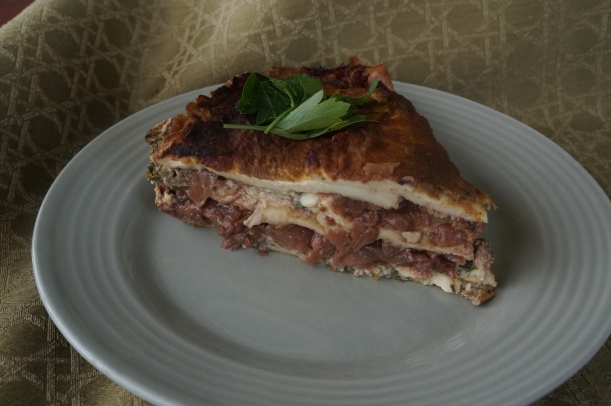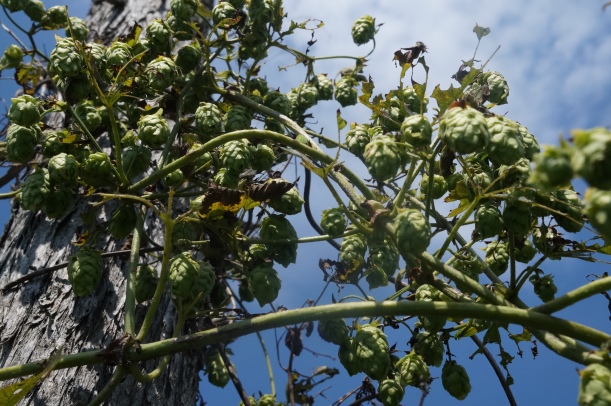
Since I began writing about foraging over five years ago, I have learned that there are more than just wild plants which are usually overlooked for their culinary uses. Sometimes decorative plants which we have deliberately planted solely for their aesthetic appeal can also provide sustenance and flavour, and are as interesting to use as their wild cousins. Lately I have learned to use some of these landscaping plants such as solomon seel, hostas and roses to name just a few.
My Japanese quince bushes (chaenomeles) which I planted from seed a few years ago are just such a plant, and if you happen to have any of these in your garden, there is no need to just let the fruit drop and leave an unsightly mess. And this is the best time of year to harvest them, even after a few light frosts. If you have access to real quinces, (cydonia oblonga), they can be used in this or any of the recipes I have previously written, Japanese quince paste, jelly and chutney.
This recipe is for a simple condiment, not so much a recipe as a method. Quantities, spices and sweetness can vary according to your preferences, but I will describe the process and ingredients I used as a start.
I had about two dozen small fruit, most of them still green. I placed the entire fruits in a pot, covered them with water, and cooked them gently until they were completely soft. I also added one red chili pepper to the pot, even though I wasn’t sure at that moment what I was making. Other spices, such as anis, cinnamon or ginger would also be good. Once the fruit was soft, I strained it and returned everything to the pot. At this point, it is very liquid.
Continue to cook until it thickens, stirring occasionally to avoid scorching. When it is almost at the desired thickness, add some sugar, balsamic vinegar, and a little salt. At this point I measured two cups of fruit to which I added 1/2 cup brown sugar and 1/4 cup balsamic vinegar. It then only needs to be cooked until it reaches the desired consistency. And that’s it!

This makes a fairly tart ketchup, although the level of sweetness is entirely up to you. If using as a glaze, for example, some extra sugar could be added. It can be used anywhere you would the tomato version, and with its intense, exotic flavour, you may find this a preferable alternative.

 Having discovered four good sized (think soccer balls) puffballs in our garden recently, I felt compelled to do something new with them. My first thought was to make a lasagna, which I did, but since good lasagna recipes already exist,
Having discovered four good sized (think soccer balls) puffballs in our garden recently, I felt compelled to do something new with them. My first thought was to make a lasagna, which I did, but since good lasagna recipes already exist, 

 A few years ago I planted some hops with the idea that I would get back into making beer. That hasn’t happened but I felt I should do something with this year’s harvest of flowers. Hops, or humulus lupulus, are mostly used for flavouring and as a stabilising agent in beer, and I wasn’t too sure if there was anything else they could be used apart from their shoots which in the spring make a delicious vegetable. It turns out that the bitter flavour of the green cone-like flowers are often used as a herb. Each variety has a slightly different flavour, but to get an idea of how it will taste, just take a ripe flower and rub it between your hands and take a whiff.
A few years ago I planted some hops with the idea that I would get back into making beer. That hasn’t happened but I felt I should do something with this year’s harvest of flowers. Hops, or humulus lupulus, are mostly used for flavouring and as a stabilising agent in beer, and I wasn’t too sure if there was anything else they could be used apart from their shoots which in the spring make a delicious vegetable. It turns out that the bitter flavour of the green cone-like flowers are often used as a herb. Each variety has a slightly different flavour, but to get an idea of how it will taste, just take a ripe flower and rub it between your hands and take a whiff.
 This recipe makes 6 biscuits, but the it could be doubled. I started gingerly at first with only 2 hop flowers, but found it required 4 to give enough flavour to be noticed, but not overly bitter either. And there’s no reason not to add other beer friendly flavours such as olives or nuts.
This recipe makes 6 biscuits, but the it could be doubled. I started gingerly at first with only 2 hop flowers, but found it required 4 to give enough flavour to be noticed, but not overly bitter either. And there’s no reason not to add other beer friendly flavours such as olives or nuts. I have already posted recipes for dolmas using leaves from wild grape vines, and really thought I was done. My previous recipes have served me well and I saw no need for any more variations but with a little ground venison at my disposal and a special request to prepare dolmas, I felt compelled to add to my repertoire. You don’t need to use venison in this recipe – any ground meat will work just as well. The spices are what makes these so good, and by using a generous amount of short-grained rice the texture is light.
I have already posted recipes for dolmas using leaves from wild grape vines, and really thought I was done. My previous recipes have served me well and I saw no need for any more variations but with a little ground venison at my disposal and a special request to prepare dolmas, I felt compelled to add to my repertoire. You don’t need to use venison in this recipe – any ground meat will work just as well. The spices are what makes these so good, and by using a generous amount of short-grained rice the texture is light.

 Related Posts:
Related Posts: Last year I experimented with Queen Anne’s lace (daucus carota) for the first time and posted a recipe for a
Last year I experimented with Queen Anne’s lace (daucus carota) for the first time and posted a recipe for a 

 When I read today’s
When I read today’s 

 Linked to:
Linked to: 


 This is a dish I discovered recently in, of all places, a donut shop which I only visited because I was in need of a coffee fix. A little plastic container of something green caught my eye and I had to try it. I decided it was some kind of exotic omelette and that it contained chickpea flour. Other than that all I knew was that it was one of the best store-bought breakfasts I’d had.
This is a dish I discovered recently in, of all places, a donut shop which I only visited because I was in need of a coffee fix. A little plastic container of something green caught my eye and I had to try it. I decided it was some kind of exotic omelette and that it contained chickpea flour. Other than that all I knew was that it was one of the best store-bought breakfasts I’d had.



 Making marshmallows is quick, easy and even fun, with the added bonus of having a confection which is so superior to the store bought variety. I only recently began to experiment with different flavours, beginning with maple, honey, and spices. Then it occurred to me to flavour them with flowers from my garden and so I began with lilac. I look forward to other flavours as they come in season – honeysuckle, peony, elderflower and Queen Anne’s lace to name a few.
Making marshmallows is quick, easy and even fun, with the added bonus of having a confection which is so superior to the store bought variety. I only recently began to experiment with different flavours, beginning with maple, honey, and spices. Then it occurred to me to flavour them with flowers from my garden and so I began with lilac. I look forward to other flavours as they come in season – honeysuckle, peony, elderflower and Queen Anne’s lace to name a few.


